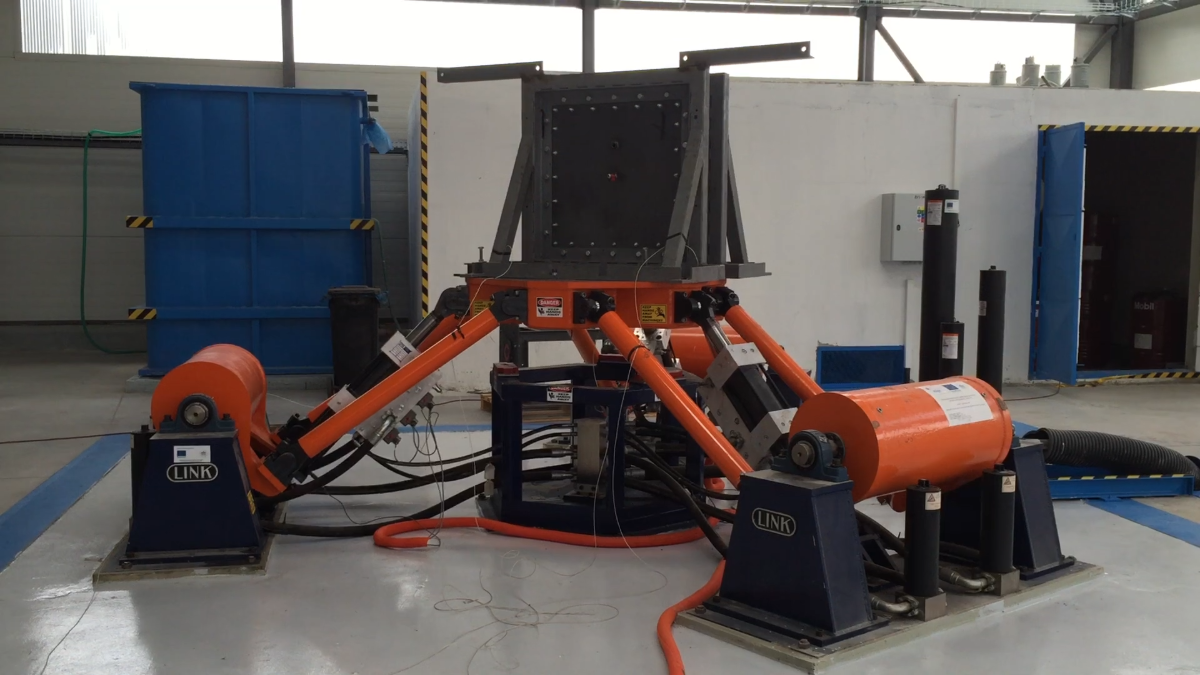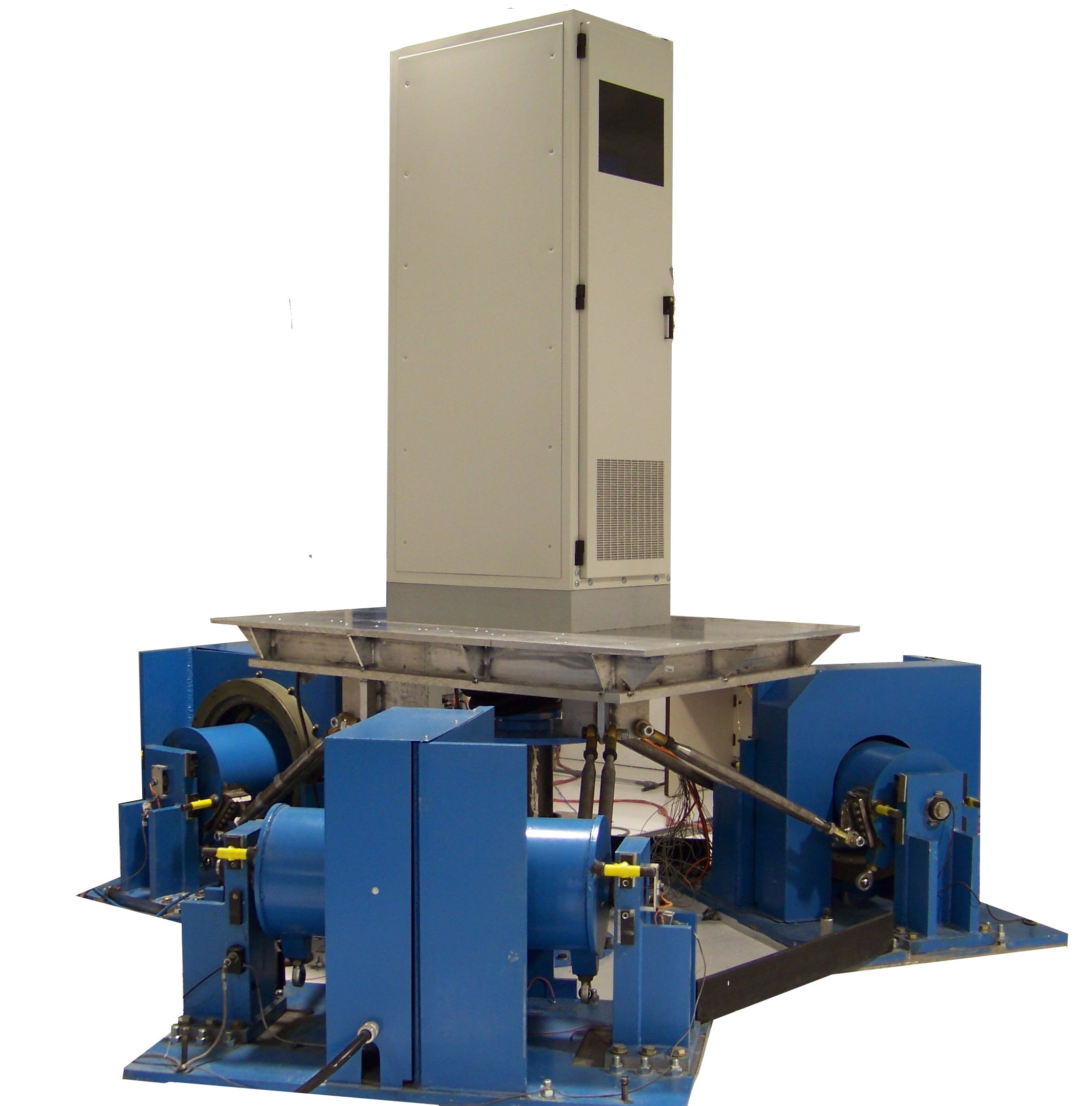Vibration testing of critical components in nuclear power facilities is essential for proper day-to-day functioning and overall safety. Generally, vibration testing in this industry involves:
- Seismic events
- Mechanical vibration and fatigue
- Thermal expansion
- Flow-induced vibration
- Structural stability
Vibration shaker tests can perform many necessary qualification tests and simulate seismic events, fatigue damage, resonance, mechanical wear, and more. The controlled environment allows for repeatable test conditions and accurate data collection.
Combined Environmental Testing
Nuclear power facilities operate under extreme environmental conditions, requiring tests that integrate multiple stress factors. Engineers can integrate fluid flow and temperature simulations alongside vibration and shock testing for a more comprehensive evaluation. Combined environment tests may include:
- Thermal-vibration testing: Evaluating change in material properties due to temperature fluctuations and joint integrity under vibrational loads
- Humidity-vibration testing: Assessing impact of moisture exposure on mechanical stability and electronic components
- Radiation-vibration testing: Determining influence of radiation exposure on material degradation and fatigue
Vibration Testing for Components in Nuclear Power Facilities
Nuclear power facilities—including power plants and research facilities—are highly regulated and must meet strict vibration testing standards for component qualification and validation. Vibration testing is required for many component types, including reactor internals, piping, pumps, electrical systems, and structural components.
Seismic Vibration Testing
 Seismic vibration testing is a primary concern for nuclear power facilities, as earthquakes pose significant risks.
Seismic vibration testing is a primary concern for nuclear power facilities, as earthquakes pose significant risks.
Engineers run large-scale shake table tests to simulate earthquakes and evaluate stability, particularly on complete structures such as containment and storage systems. However, smaller components like electronics must also be resistant to damage during seismic events. Seismic test standards that regulatory bodies often reference include:
- IEEE/IEC 60980-344
- ASME QME-1
- IEC 60980
- ISO 8528-9
- 10 CFR Part 50, Appendix S
- IAEA Safety Standards
- ASCE 4-98
Components Under Test
- Reactor pressure vessels and internals
- Piping systems
- Control and safety systems
- Electrical panels and instrumentation
- Containment structures and supports
- Spent fuel racks and storage systems
Seismic Vibration Testing Methods
 Closed-loop vibration shaker testing can simulate earthquake ground motion to assess component response. Vibration testing for seismic qualification typically involves sine and random vibration testing but also includes multi-axis time-history simulation to replicate earthquake conditions.
Closed-loop vibration shaker testing can simulate earthquake ground motion to assess component response. Vibration testing for seismic qualification typically involves sine and random vibration testing but also includes multi-axis time-history simulation to replicate earthquake conditions.
- Sine vibration: Identifying resonant frequencies that could amplify seismic vibration
- Random vibration: Simulating broadband ground motion to assess fatigue response
- Multi-axis time-history: Replicating recorded earthquake waveforms for realistic simulation
- Shock response spectrum (SRS): Evaluating component response to a broad range of seismic shocks
Fatigue and Stress Testing
Beyond seismic events, nuclear components must also withstand long-term mechanical wear. Fatigue and stress testing help engineers identify potential failure points caused by repeated mechanical loads and environmental stressors.
Fatigue and Stress Testing Standards
- MIL-STD-810H
- ASTM E1049
- ASME OM Code
- ASME Boiler and Pressure Vessel Code (BPVC)
Components Under Test
- Control rods and drive mechanisms
- Primary and secondary coolant piping
- Reactor coolant pumps (RCPs)
- Emergency diesel generators
- Turbines and rotating equipment
- Sensors and instrumentation
- Battery racks and backup power systems
Fatigue and Stress Testing Methods
Engineers use multiple fatigue testing methods to accelerate stress exposure and predict long-term durability:
- Fatigue damage spectrum (FDS): Creating an accelerated random vibration profile based on recorded waveforms to simulate a full lifecycle of fatigue damage
- Sine-on-random: Combining sinusoidal and random inputs for more realistic testing of rotational components
Beyond vibration and fatigue, nuclear components face additional environmental stressors that influence their structural integrity and performance. Engineers must account for factors such as:
- Radiation
- Corrosive agents
- Extreme conditions, incl. temperature and pressure
Regulatory Compliance & Reporting
In the nuclear industry, engineers must document test results and provide comprehensive reports for regulatory bodies such as:
- Nuclear Regulatory Commission (NRC) (e.g., 10 CFR Part 50)
- International Atomic Energy Agency (IAEA) Safety Standards
- Department of Energy (DOE) guidelines
- American Society of Mechanical Engineers (ASME) Codes
Required documentation includes:
- Test plans: Test objectives, procedures, and acceptance criteria
- Data acquisition records: Raw and processed vibration test data
- Validation reports: Compliance with industry standards and regulatory requirements
Challenges in Seismic Vibration Testing
If your lab is looking to incorporate vibration testing into its program, or if you’re experiencing one of the following challenges in your testing, contact Vibration Research. We can help you determine the best solution.
- Replicating real-world seismic events
- Testing large components under realistic constraints
- Ensuring redundancy and fail-safes for critical systems
- Validating test results against regulatory criteria
